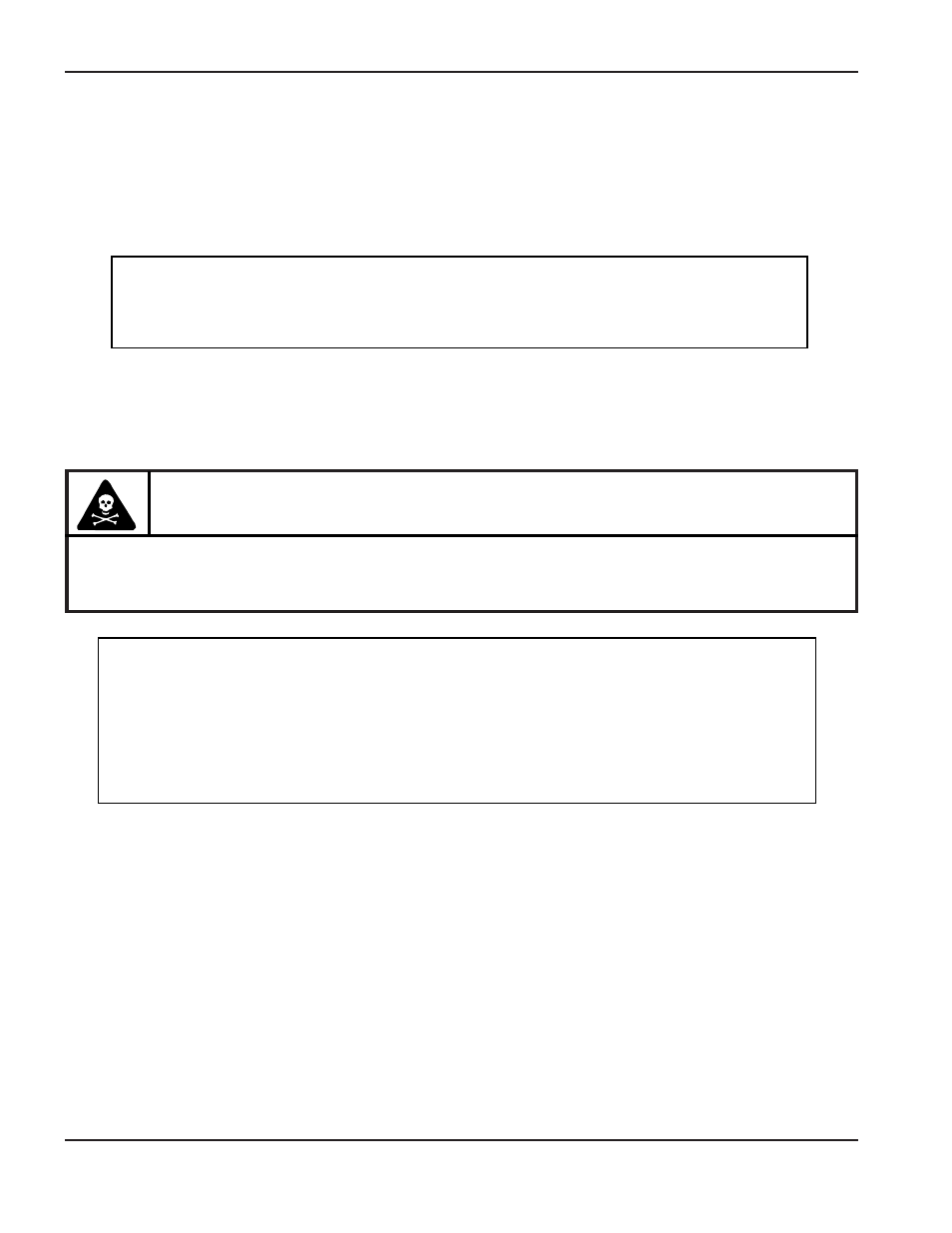Torch coolant requirements, Grounding requirements – Hypertherm HT2000-200 Volt User Manual
Page 45

PRE-INSTALLATION
3-4
HySpeed HT2000
Instruction Manual
24
WARNING
Propylene glycol and benzotriazole are irritating to skin and eyes, and harmful or fatal if
swallowed. Upon contact, flush skin or eyes with water. If swallowed, drink water and call a
physician immediately. Do not induce vomiting.
Torch Coolant Requirements
The power supply is shipped to the customer without any coolant in the tank. Hypertherm recommends a
mixture of 30% propylene glycol, 69.9% deionized water, and .1% benzotriazole. This mixture resists freezing
to +10° F (-12° C) and contains a corrosion inhibitor (benzotriazole) to protect copper surfaces in the coolant
loop. This mixture is available in one-gallon containers by ordering 028872. 100% propylene glycol is
available by ordering 028873.
Caution:
For operating temperatures colder than the temperature stated above, the
percentage of propylene glycol must be increased. Failure to do so could result in
a cracked torch head, hoses, or other damage to the torch coolant system due to
the torch coolant freezing.
See Figure b-1 chart in
Appendix B
to determine if a stronger propylene glycol/purified water solution is
needed for your particular application.
Observe the warning and cautions below. Refer to the Material Safety Data Sheets in Appendix B for data on
safety, handling, and storage of propylene glycol and benzotriazole.
Caution:
Always use propylene glycol in the coolant mixture. Do not use anti-freeze in place
of propylene glycol. Antifreeze contains corrosion inhibitors that will damage the
torch coolant system.
Caution:
Always use purified water in the coolant mixture in order to prevent corrosion in the
torch coolant system. The hardness of the purified water should be between .206
and 8.5 ppm. If using a conductivity meter to measure water purity, the
recommended level is between 0.5 and 18 µSiemens/cm at 77° F (25° C).
Grounding Requirements
Proper grounding is essential for reasons of personal safety and to prevent emission of high frequency
interference. See Appendix F for system grounding requirements.
Connect the worktable to a high-quality earth ground from 3 feet to 20 feet of the table. A suitable ground
consists of a solid copper rod of at least 1/2-inch diameter driven to a depth of at least 8 feet into the earth
below the permanent moisture level. For additional information consult the National Electric Code, Article 250,
Section H
Grounding Electrode System
, or other appropriate code.
